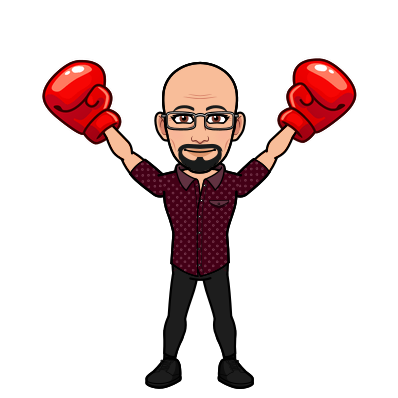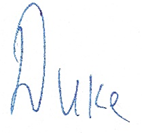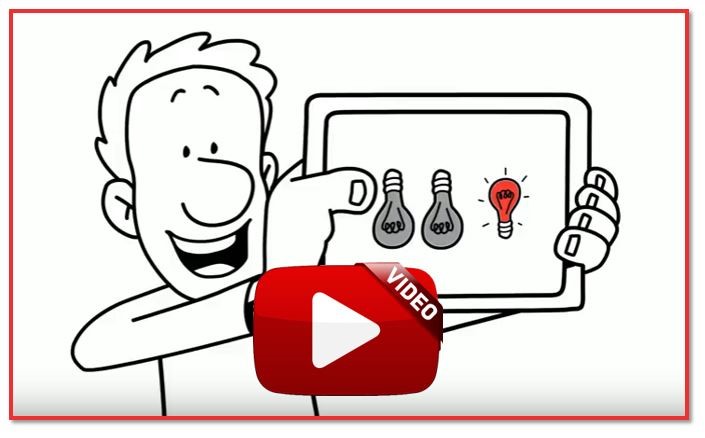You Worked Your Butt Off
You started your own business or climbed the ladder to a leadership position because you are passionate about your profession. You probably saw an unmet demand in the market and thought you could meet it better than anyone else. And through it all, you worked your butt off to stay competitive, stay in business despite all adversities, and your business thrives.
I would venture to guess that as a business owner or manager, you probably wear multiple hats, and at some point, you oversaw the marketing efforts of your company. And most entrepreneurs have done so not because they are professional marketers, but rather out of necessity. You did not start your business because you wanted to do marketing… you started it because you have a skillset in some other discipline, and you wanted to make a difference. I urge you to consider outsourcing your marketing function from planning to implementation, and for that matter, consider doing so with outer non-core competencies of you and your team. Based on my conversations with hundreds of businesspeople over the past year alone, I know outsourcing is often a scary thought for a leader – handing over an essential part of your business seems risky. But it doesn’t have to be!When done right, an outsourced marketing firm should work closely with you and free up your time to do what you do best, while allowing you to make all final decisions.
Working with a proven outsourced marketing firm has many advantages including:
- Better results
- Freedom to run your business and do what you do best
- Instant “on” with immediate impact
- Cost-effectiveness and flexibility
- Lower overhead
- Budgetary discipline
- Outside perspective, expertise, and capabilities
- Always current with the latest in marketing best practices
- Accountability
- Integral part of your team
If your business is growing or needs to grow more rapidly, outsourcing certain functions is a proven formula that delivers results more efficiently and more effectively than trying to do it all on your own or hiring more employees, training them, and supervising them.
At Fractional CMO & Marketing, we help companies by providing expert marketing leadership, accelerating growth, and improving profitability. If you would like to find out more about how we do it and how it works, we are only a phone call away. We will be delighted to discuss our unique arrangement for an outsourced marketing department with you.
Duke Merhavy, MBA, Ph.D.
President & Chief Marketing Officer
What Is Fractional CMO & Marketing?
Fractional CMO & Marketing is ‘Your Outsourced Marketing Department’ when you need expert marketing leadership and marketing services to accelerate growth and improve profitability, but you’re not quite ready to hire a full-time Chief Marketing Officer or your own marketing department.
Our unique arrangement is the most efficient, innovative, and cost-effective formula for you. Click on the image to the left to watch a short video.
We Help When You Need To:
- Generate more of the right kind of leads
- Close more sales faster
- Get repeat sales
- Formulate a more effective message
- Produce powerful sales tools
- Establish brand awareness, recognition, and preference
- Differentiate your brand from the competition
- Improve customer satisfaction and loyalty
- Develop lasting relationships with customers
- Introduce new products
What Etsy Did Right During the Pandemic
By Ginger Mace, Editor and Producer
If you aren’t familiar with Etsy, it is an online marketplace founded in 2005 where sellers and creators offer vintage or handmade items and crafting supplies. While that might seem very niche, it’s important to remember that over 60 million items were for sale in the Etsy community at the end of 2018, ranging from clothing to furniture, jewelry to bags of all sizes, toys to art, and many other categories. The ability to create a storefront and list an item for up to 4 months for only 20 cents is obviously quite attractive to those with items eligible for sale on Etsy. Over 2.1 million sellers, who also pay 5% of their items’ sales prices to the site, and almost 40 million buyers did business by the end of 2018. The company was having plenty of success, and then the COVID-19 pandemic hit… and there was plenty more success to be had!
Etsy leveraged the differentiating factors of its business and engaged in a marketing and public relations campaign that was measured, appropriate for the worldwide situation, helpful to those who had lost their jobs or income, and perfectly executed.
March 20, 2020: Just four days after the White House Coronavirus Task Force announced “15 Days to Slow the Spread” (3/16/20), Etsy CEO Josh Silverman was interviewed live on Fox News. He discussed what Etsy was and how it helped people with their ‘side hustle’, and that some shop owners were running their online enterprises full-time. Silverman also reminded the audience and host, Dana Perino, how the creators and artisans on Etsy were not eligible to receive unemployment from that venture alone, and that the government should not forget to include those in similar working situations in any economic assistance programs, especially since 60% of shop owners only make income from their Etsy presence. It wouldn’t be long after this when we all learned anyone not considered an “essential worker” might lose part or all of their income, or their job entirely (at least temporarily).
Why is this good marketing? In only about 3 minutes, Josh Silverman stood up for his company and creator community, made Etsy shop operators feel valued and seen (as evidenced by the 100% positive comments on Etsy Forums about his interview), sent a message to those interested in selling their wares on the site that the CEO himself cares about the livelihood and success of Etsy contributors, and more – and this was at a time when most Americans were glued to the top watched cable news network to stay updated on the novel coronavirus epidemic (soon to become a pandemic).
April 7, 2020: A few short days after the CDC updated guidance for wearing cloth face coverings to protect against transmission of the novel coronavirus, Etsy’s CEO was interviewed again on the same network, and like before, he discussed the economic plight of shop owners, as well as an initiative by the company that was launched 2 weeks prior. Josh Silverman announced the Etsy #StandWithSmall campaign and that he asked those on Etsy who could sew to offer fabric face masks. In those 2 weeks, almost 20,000 separate shops started offering hundreds of thousands of them, and the timing coincided with the March 25th reports that a longer shutdown can delay a second wave of the virus, most likely prompting many of those who were about to lose their jobs or income to look for another way to bring money into their homes. In April 2020, sales of face masks on the bespoke crafts site numbered 12 million, or $133 million. Other items that were hard to find in stores like gardening seeds, sewing materials, and kitchen needs were selling well too. Others with the ability to sew jumped on the Etsy bandwagon too, and the fabric face masks alone made up approximately 11% of gross sales of shop-offered items by the 3rd quarter of 2020, or about 24 million sold.
Why is this good marketing? Again, in only about 3 minutes, the Etsy CEO was able to fit in everything he did in the previous interview, and also how quickly and easily someone can open a shop to start selling the face masks (including that the required pattern and other helpful information was available on Etsy to help interested sewing enthusiasts get started), and how the masks can be personalized, adding value to the handiwork being done and interest from viewers in what stylish options were possible. Silverman added, “And when you buy from one of the Etsy sellers, you’re actually putting money in the pockets of another tax-paying American, who has often been hard-hit by this economic crisis, so it’s a really good way to mobilize cottage industries so that Americans can help Americans.”
Additional statistics from that time (early-April 2020) really show the success of Etsy’s marketing and public relations approach early in the COVID-19 pandemic:
- On Etsy alone, over the few days previous to April 7th, visitors to the website made over 2 million searches, including “face masks” at a rate of 9 times per second, clearly seeking a suitable alternative to the disposable, medical masks we were asked not to buy so essential workers and healthcare professionals would not go without them.
- Prior to Etsy’s request of its shop owners to start offering fabric face coverings, only about 4,000 individual sellers had them on offer, presumably for those who need them for their occupations or for allergies or chronic illnesses and conditions necessitating the buyer’s protection, and certain hobbies where there could be inhalation of irritants (such as painting, gardening, and woodworking). In the first week after the company’s plea, there was a 75% increase in the shops offering face masks, and by the second week, a 500% overall increase to the 20,000 was seen. (By the end of the first week in May 2020, 60,000 sellers were offering fabric face masks.)
We have shared just two examples in this article to showcase the many moves that Etsy did right when the COVID-19 pandemic hit the United States, and continues to build off of now. Discussing what makes this selling option different than other online marketplaces and showing that the company cares about the community that makes it tick through smart, well-executed marketing initiatives is still paying off today, over a year later. In 2020, shares in Etsy went up over 400%, and blew away financial performance expectations across the board – in the 4th quarter, gross merchandise sales went up 152%! Two-thirds of shop owners stated that their sales were either stable or even increased during the difficult year of 2020, as many shoppers on the site went from one-time occasional visitors searching for a special gift to repeat customers ordering face masks and other unique items. Partly due to timing, but mostly due to savvy leadership and marketing moves to take advantage of the timing without being unseemly or using bad form, Etsy helped both itself and its shop-owning creators and artisans not only make it through the very worst of the 2020 pandemic, but to thrive afterwards too.
The First Long-Distance Road Trip… And A Successful Marketing Stunt
By Ginger Mace, Editor and ProducerWhile only about as long as some people’s commute before the COVID-19 pandemic, the world’s first long-distance road trip on record was much more than a drive down a country road. In August 1888, Bertha Benz drove a Benz Patent-Motorwagen Number 3 from Germany’s Mannheim to Pforzheim, covering 106 kilometers (66 miles) there, plus the same distance back. The journey took a little over half a day – and that’s a 24 hour day, not an hours-of-daylight day – as the third experimental motor car she was driving went no more than 16 kilometers per hour (10 miles per hour). Certainly figuring she may run into some issues and it was better to be safe than sorry, Richard and Eugen, her two teenage sons, accompanied her.
Perhaps realizing her husband wouldn’t be amenable to the road trip, he was not informed of the plan, and therefore, obviously couldn’t and didn’t give his consent or permission. We bet there was a bit of tension when she pulled into the driveway that fateful night. By now, you’ve probably noticed the adventurous motorist’s surname – Benz. She was indeed the wife of Karl Benz, who invented the Benz Patent-Motorwagen. He was the first patent recipient for such a motorized automobile. Visiting her mother was the reason Mrs Benz gave for her daring distance drive, but off the record, her mission was to bring attention to her spouse’s Motorwagen. Prior to her bold move, the car had only been tested during short drives, and what better way to showcase its beauty, craftsmanship, and reliability, as well as the freedom it gave drivers and families, than with a long road trip with only a woman and two young men (which by late 1880s standards was out of the ordinary, to say the least). Bertha Benz saw the fruits of her idea – the Motorwagen became quite popular in the years that followed. The company’s and family’s legacy continues today, with Mercedes-Benz being one of the most respected and sought-after automobiles on the market, and the Bertha Benz Memorial Route in Baden-Württemberg still marks her journey.Take Advantage of Us
Call us at 888-412-2236 or use the button below to request a complimentary Marketing Needs Assessment, or to ask us a question regarding your most pressing marketing or sales challenges.





